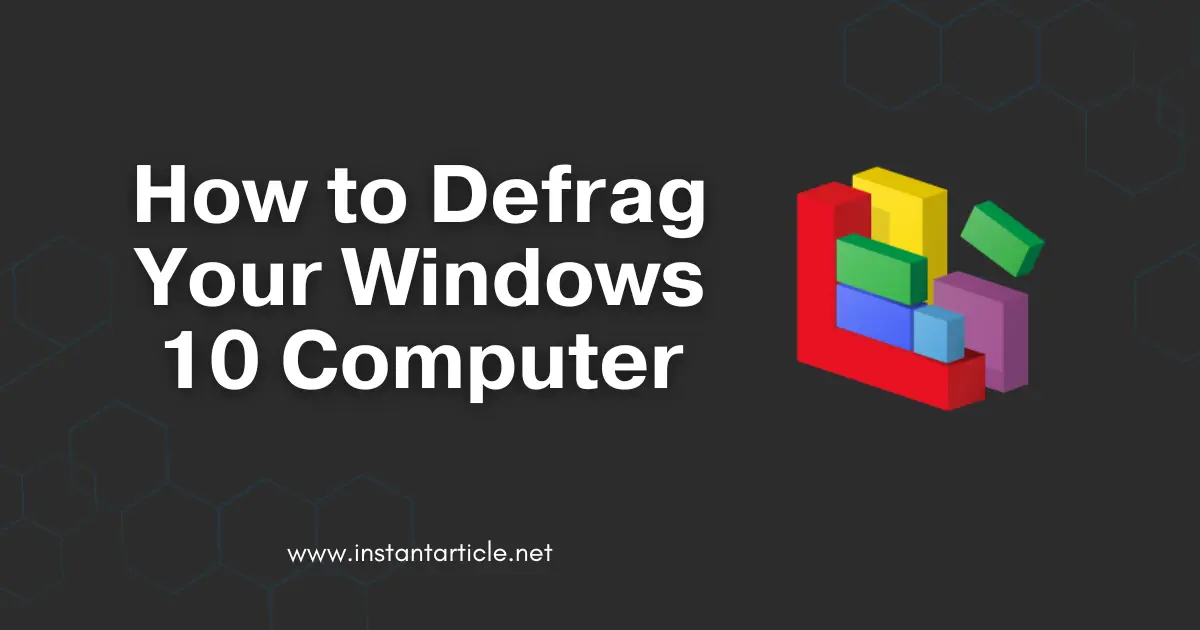Is your computer feeling more like a snail than the speed demon it used to be? We’ve all been there—waiting endlessly for programs to load, wondering if our PC is on its last legs. Before you rush out to buy a new one, let me share a little secret: a quick defrag might be all you need to bring your computer back to life. It’s easier than you think, and I’ll show you exactly how to do it.
Why Defragmentation is Important
Let me share a quick story. A while back, a friend of mine complained that his computer was “too old and slow.” He was convinced he needed a new one. But after a quick look, I realized his hard drive was heavily fragmented. I ran a defrag for him, and the difference was incredible—his computer was almost as fast as when he first got it! Sometimes, a simple defrag is all it takes to breathe new life into your machine.
When your files are fragmented, your hard drive has to work extra hard to find and piece together everything it needs, slowing down your computer in the process. Defragmentation reorganizes these files, putting all the pieces back together so your computer can access them more quickly. This not only improves performance but can also help extend the life of your hard drive by reducing the wear and tear caused by constantly searching for fragmented data.
How to Defrag a Hard Drive in Windows 10
Step 1: Open the Disk Defragmenter Tool
The first time I tried defragging my computer, I didn’t even know where to start. But don’t worry—it’s actually really simple.
- Click on the Start menu and type “defragment” into the search bar. I usually just type “defrag” and hit enter.
- Select “Defragment and Optimize Drives” from the search results. This will open up the Disk Defragmenter tool, which is basically like your computer’s housekeeper.
Step 2: Select the Drive to Defrag
Once you’ve opened the Disk Defragmenter tool, you’ll see a list of all the drives on your computer. The first time I saw this, I was surprised—I thought I only had one drive!
- Select the drive you want to defrag. In most cases, this will be the C: drive, where Windows and most of your files are stored. If you’re unsure, C: is usually a good place to start.
- Click on “Analyze” to check if the drive needs defragmentation. Windows will scan the drive and show you the percentage of fragmentation. If it’s over 10%, it’s a good idea to defrag.
Step 3: Defrag the Drive
- If the drive is fragmented, go ahead and click on the “Optimize” button to start the defragmentation process.
- Wait for the process to complete. This can take anywhere from a few minutes to a few hours, depending on the size of your drive and how fragmented it is. I usually let it run while I take a break or get some other work done.
Step 4: Schedule Regular Defragmentation
Windows 10 is pretty smart—it’s set up to automatically defrag your drives on a regular schedule. But if you like to be in control, you can adjust the schedule yourself.
- In the Disk Defragmenter tool, click on “Change settings”.
- Set the frequency of defragmentation (Daily, Weekly, or Monthly) and choose the drives you want to include. Personally, I stick with weekly—it’s a good balance between performance and convenience.
- Click “OK” to save your settings. And that’s it! Your computer will now defrag on its own without you having to worry about it.
Should You Defrag an SSD?
Here’s something I learned when I switched to an SSD (Solid State Drive): You don’t need to defrag it! I was a bit skeptical at first, thinking defragging was essential for all drives. But SSDs work differently from traditional hard drives.
SSDs store data in flash memory and can access it almost instantly, no matter where it’s located on the drive. Defragging doesn’t improve performance for SSDs and can actually reduce their lifespan. Thankfully, Windows 10 knows this and won’t defrag your SSD. Instead, it performs a process called “TRIM” that helps keep your SSD in good shape by cleaning up old, unused data. So, if you have an SSD, you can skip the defragging and let Windows handle the optimization.
Frequently Asked Questions (FAQs)
It really depends on how you use your computer. If you frequently install and delete large files like games or videos, you might want to defrag more often. For most people, though, once a month is usually enough. I find that a monthly defrag keeps my system running smoothly without taking up too much of my time.
No, defragmentation doesn’t delete any files. It’s just like reorganizing your closet—it moves things around to make them easier to find but doesn’t get rid of anything.
Yes, you can. But, you might notice things running a bit slower while it’s in progress. Personally, I usually start a defrag and then step away to do something else—maybe grab a coffee or take a short walk. When I come back, the defrag is usually done, and my computer is running better than ever.
If you don’t defrag, your hard drive will become more fragmented over time, leading to slower performance. It’s kind of like letting your room get messier and messier—eventually, it’ll take forever to find anything!
You can easily check the fragmentation level using the Disk Defragmenter tool. If the fragmentation percentage is above 10%, it’s a good idea to defrag. But honestly, I just schedule a defrag once a month—it’s easy and keeps things running smoothly.
Conclusion
Defragmenting your hard drive is one of those simple maintenance tasks that can make a big difference in your computer’s performance. I’ve seen it firsthand—whether it was my own laptop or my friend’s aging desktop, a good defrag can make your machine feel like new again. Windows 10 makes it easy to defrag your hard drive manually or automatically, so there’s really no excuse not to do it.
Next time your computer feels sluggish, try running a defrag before you think about upgrading or replacing it. You might be surprised at how much of a difference it makes!

